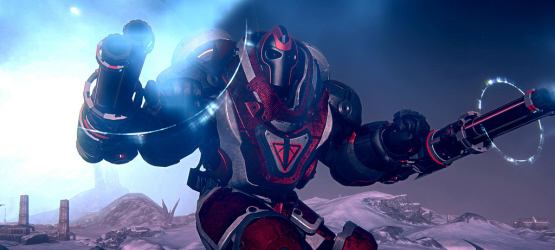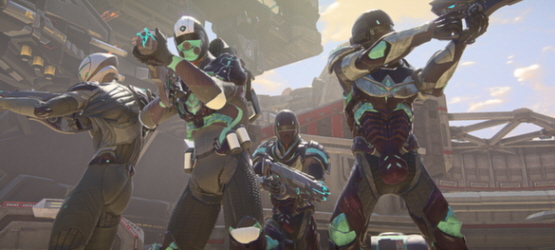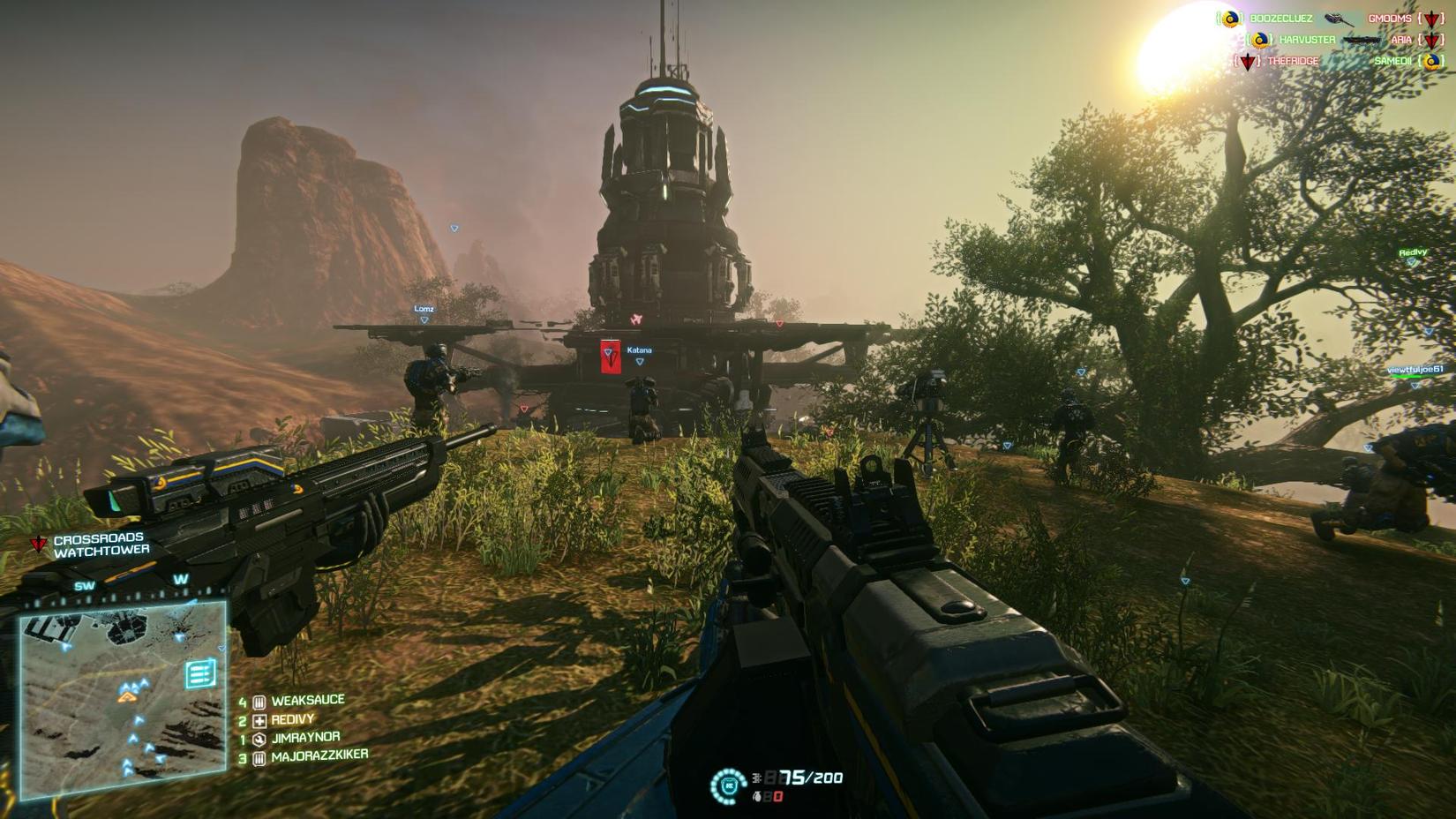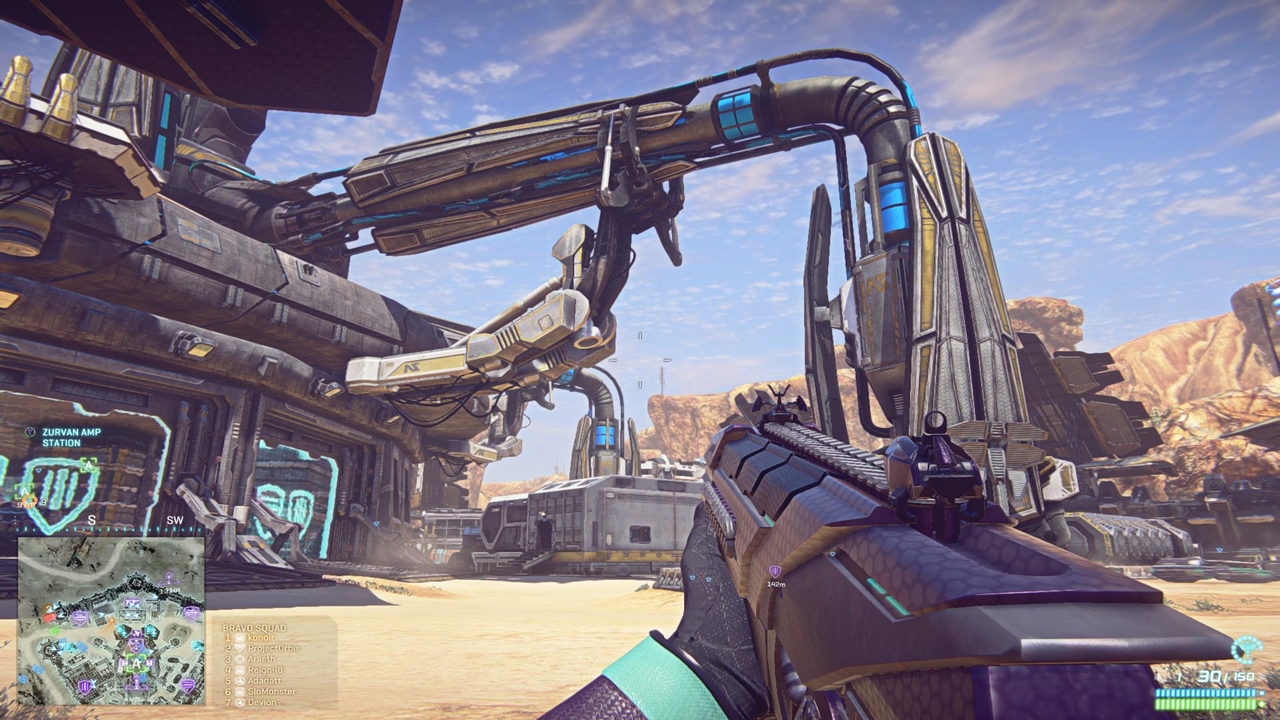Perched atop a towering and snowy mountain, I peer down my sniper scope across the vast rolling hills of Esamir. My fellow Vanu Sovereignty soldiers are pinned down; besieged by a seemingly relentless wave of enemy rebels that scramble over the Hoth-esque horizon like organized ants. Visibility is low, and the blizzard that engulfs the scarred battlefield only makes matters worse. Bullets cut through the icy air at a break-neck speed, but from up here, I’m relatively safe. Any soldier that stumbles into my crosshairs is dispatched quickly — quietly. One, three, five; it isn’t long before I’ve struck up the start of an exciting killstreak when suddenly, out of nowhere, a wayward anti-aircraft missile slams into an enemy gunship overhead, sending the doomed Mosquito careering in my direction. But not without blowing my hapless, admittedly overconfident sharpshooter to kingdom come.
Welcome to PlanetSide 2, where emergent gameplay moments and sprawling futuristic warfare are king.
Taking place across the striking milieus of Auraxis, Daybreak Games’ colossal MMO shooter charts the trials and tribulations of an all-out sci-fi conflict between three warring factions: Terran Republic, New Conglomerate and the Vanu Sovereignty. After swearing allegiance to a cause of your choosing, it isn’t long before you’ve crafted a character, selected a class, and been shipped out onto the battlefield — little more than a pawn on the galaxy’s biggest chess board.
The Great Auraxian War
Now, you may be asking how you can possibly make an impact on a shooter that stretches up to and beyond 1,000 players, but engaging in these Herculean battles is all about fighting for a greater, larger-than-life cause. Whether it’s the Infiltrator, Combat Medic or the tech-savvy Engineer, each class in PlanetSide 2 harbors a unique ability that contributes to the overarching battle; be that in the form of resupplying allies with ammunition or providing sniper cover for a flanking group of Assault soldiers.
Considering that this was my very first experience dabbling with Daybreak’s MMO, I’ll be the first to admit that my initial stint in Auraxis was somewhat overwhelming — other members of my squad would most likely agree — as my VS troop stumbled across the terrain like a fish out of water. With numerous firefights littering the alien world, it’s easy to feel like a very small cog in a very big machine, but after spending some time within the training facility, it wasn’t long before I began to find my groove.
That said, beyond a brief introduction, PlanetSide 2 makes few concessions for newcomers looking to get in on the galactic action. Koltyr — one of the five main playable continents alongside Indar, Esamir, Amerish and Hossin — does serve as a beginner-friendly haven, allowing those soldiers still wet behind the ears to duke it out in a relatively controlled environment up until level 15. But generally speaking, this is game that leaves you to your own devices.
Safety in Numbers
And so, after settling into a class and character befitting of your play style, it’s time to hit the frontlines and battle for your empire. Set across one gigantic and persistent war, the action in PlanetSide 2 is relentless in every sense of the word. For genre fans, the set-up is comparable in some ways to Battlefield; players will wrestle for ownership of several security terminals, all in the hope of nudging the momentum of battle ever so slightly in their faction’s favor. Imagine BF’s Conquest mode, only on an entirely different, believe-it-when-you-see-it scale.
Capturing territory is absolutely critical in Daybreak’s MMO, and this drive for supremacy is effectively fuelled by the game’s underlying Lattice Link. It’s a feature that systematically controls which bases can or cannot be attacked at any given time, thereby streamlining the action and ensuring that despite the chaotic competition, there remains a glimmering degree of order underpinning the all-out galactic skirmish.
Want to sabotage the generators of an enemy base? Of course you do, but first you and your platoon will have to occupy the neighbouring territory that is connected to said camp before beginning your siege. By pressing the DualShock 4’s TouchPad at any given time, a map will illustrate the linkages between every post, as each faction gradually builds towards a spider’s web of interconnected hubs.
Slowly, region by region, you’ll begin to occupy enough territory to gain a foothold in this most dynamic, ever-changing combat. Battles are won and lost every day, but the war has and indeed will continue to rage on unabated. Then again, there’s a tremendous sense of accomplishment when your platoon finally topples an enemy stronghold after literally hours of warfare — a feeling aided by the dynamic day/night cycles and stellar sound design.
Building up momentum is the true key to success, and depending on the camaraderie between your squad members, your faction will either blaze through enemy territory like a squadron of 300 Spartans on steroids or, on the other hand, struggle to maintain an acre of alien land beyond the towering walls of home base.
In truth, this ebb and flow is part of the game’s charm; factions rise and fall over the course of weeks, holding ownership of entire continents for a fleeting period — at least relative to PlanetSide 2’s scope — before their empire comes crumbling down. There’s a permanence to Daybreak’s sprawling world that sets it apart from its genre contemporaries, even if the early, sink-or-swim period can be bewildering and a little obtuse.
Guerrilla Warfare
My advice? Shimmy your way into a squad as soon as possible should the going get tough. Supporting up to a dozen friends and/or strangers, these groups offer support and experience boons that will not only help you rise up through the ranks, but can be remarkably effective when put to good use. Teamwork is paramount, and anecdotally, the vast majority of my encounters with friendlies produced a benevolent, mutually beneficial alliance.
For those curious about the narrative, there’s little-to-no exposition or way of fast-tracking players into the fray. Truth be told, Daybreak’s shooter doesn’t devote much time to story, nor does it delve into the finer details of why you’re fighting in the first place; all you know for sure is that a trio of colossal factions wage war on Auraxis over resources and land. In PlanetSide 2, it’s really a case of shoot first, ask questions later.
That’s not to say the story — or lack thereof — will act as a deterrent, as there are still ample reasons for the passing genre fan to dip their toe in Daybreak’s console-friendly MMO. PS2 may err on the side of inaccessible at times with its smattering of mission updates and objectives, but considering the genuine free-to-play framework, this is a game built with the player in mind.
So often it is that F2P experiences, while enticing to begin with, would contain some form of artificial ceiling; locking away premium content after a particular cut-off point or level threshold. For PlanetSide 2, this is certainly not the case.
Those wishing to speed up leveling or open up certain weaponry can do so via the Battle Cash currency, with Daybreak also offering monthly membership tiers boasting an array of perks. That said, perhaps due to the sheer scale of the title itself, these paid-for options aren’t as advantageous as they first appear.
Certification Points (Certs) act as an alternative to the premium currency, and you’ll soon find that the vast majority of the in-game arsenal, vehicles and abilities can be unlocked organically. It’s primarily cosmetic items that are locked behind Battle Cash paywalls, negating any worries of unbalancing the shooter or invoking a pay-to-win mentality. Ostensibly, you can play through the vast majority of PlanetSide 2 without investing any real-world money; it’s incredibly well balanced, and though the marketplace is lined with opulent armaments and perks, there’s little reason to actually own said wares beyond bragging rights.
The result? A pragmatic set-up that allows for deep character customization, yes, but one that also places the action front and center. Because once the stars align and the players come rolling in, PlanetSide 2 really begins to shine, with enough truly organic gameplay moments to make other offerings read like one giant, scripted QTE.
However, as an online shooter, Daybreak’s title is vulnerable to the genre’s occupational hazards. Between incremental updates and outages, PS2’s servers haven’t had the smoothest of launches on PlayStation 4— particularly in Europe. And while the majority of kinks have since been ironed out, there were a couple of instances during my time with the game when I was abruptly disconnected, whereas a separate bug forced me to do a hard reset.
Worth the Wait?
Moreover, friendly fire remains an issue and there’s little variation in the armor between you and your sworn enemies. Players do have the ability to tag a visible baddie so that they’re highlighted for your allies to target, but more often than not, you’ll hear “stop shooting, we’re on the same side!” echo around the battlefield quite regularly. Now, with such a huge install base, there’s plenty of trigger happy soldiers who will damage friendlies and dance to their own tune; though when you accidentally empty a clip on an ally, accumulating a fair share of Grief Points in the process, this lack of identity can be pretty frustrating.
Overall, though, PlanetSide 2’s unique selling point remains its inordinate, at-times-mind-boggling scope. Engaging in The Great Auraxian War is a truly liberating experience, giving you free reign to experiment with classes and different strategies without adhering to a set round time limit. By the same token, this persistent set-up does mean that the concept of winning is somewhat abstract, with victory coming in small, periodical doses rather than one triumphant swoop.
Mind you, if you’re struggling to make headway in a particular region, you can simply respawn in a different zone — or indeed a different continent altogether — and adjust your tactics accordingly. Again, this is where the Lattice Link helps guide the endless battle with a deft touch, ensuring that the action remains concentrated amidst the vast expanses of any given map.
In addition, PlanetSide 2 does implement ways to circumvent the potential drawbacks of its large-scale arena, with the ability to warp straight to the nearest front via the ‘Instant Action’ option, not to mention the various jump pads littered across the environmental hot spots. Vehicles help counter this, too, with the hulking Galaxy — an aircraft able to hold up to 11 players — holding the ability to change the tide of a firefight in an instance.
Technology Equals Might
Unmatched in both scale and scope, Daybreak has crafted a prodigious world that feels alive with emergent stories and unique player experiences, and beyond some technical frustrations, PlanetSide 2’s transition onto console is undoubtedly impressive. It’s fair to say that newcomers — myself included — will likely find the experience to be a slowburner upon touching down on the beautiful vistas of Auraxis, but stick with it after those formidable first hours and you’ll discover a deep, engaging shooter.
Sprawling, dynamic battles rage across the four corners of this most alien world daily, with enough blockbuster action to make a Michael Bay film seem like a Saturday morning cartoon, and that the entire affair runs relatively smoothly is a testimony to the shooter’s technical chops.
Rarely does a game resonate with me enough to keep playing beyond review, but for PlanetSide 2, it feels as though my journey is just getting started.
Membership code for PlanetSide 2 provided by publisher. Reviewed on PlayStation 4. For more information on scoring, please read our Review Policy.
-
Phenomenal, almost unrivalled sense of scale
-
Emergent gameplay helps create memorable moments
-
Fantastic and fairly balanced for F2P title
-
Persistent war is truly engaging
-
Multitude of playstyles at your disposal
-
Few concessions for newcomers
-
Obtuse story and lack of character
-
Technical hiccups
PlanetSide 2 Review
-
PlanetSide 2 Review
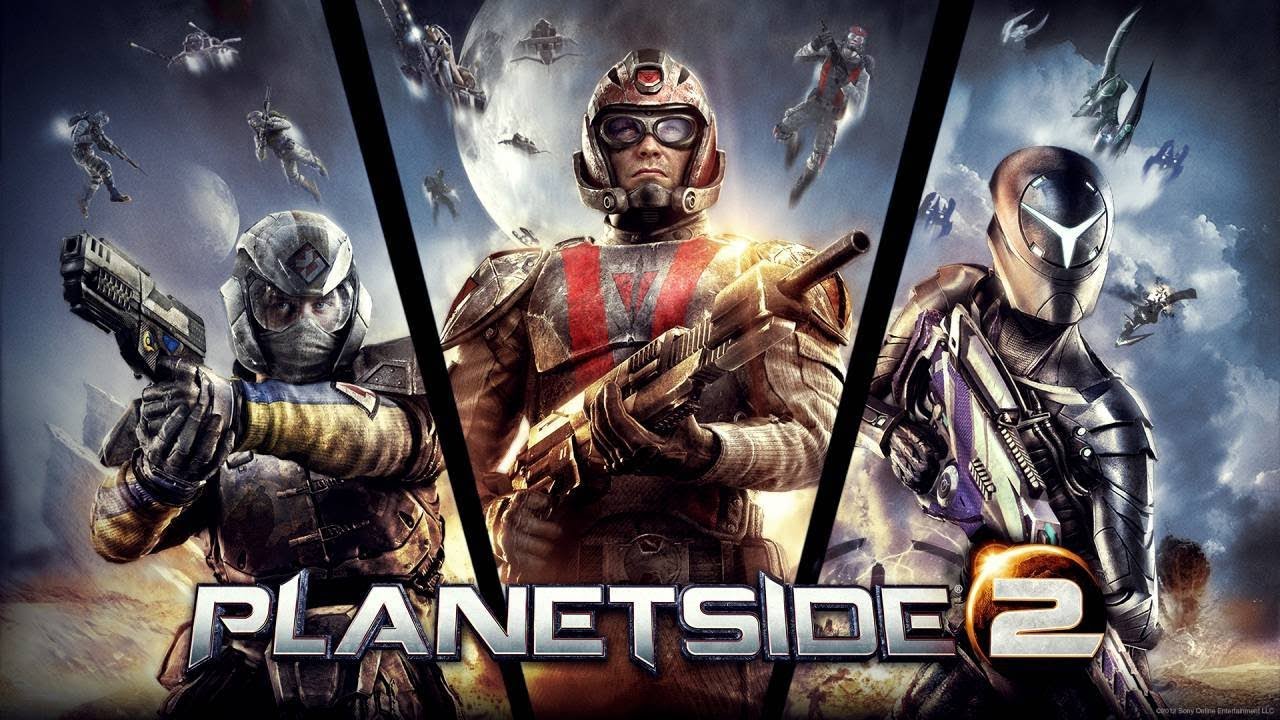
Welcome to PlanetSide 2, where soldiers make their own stories across the huge and persistent conflict.
-
Better with Friends
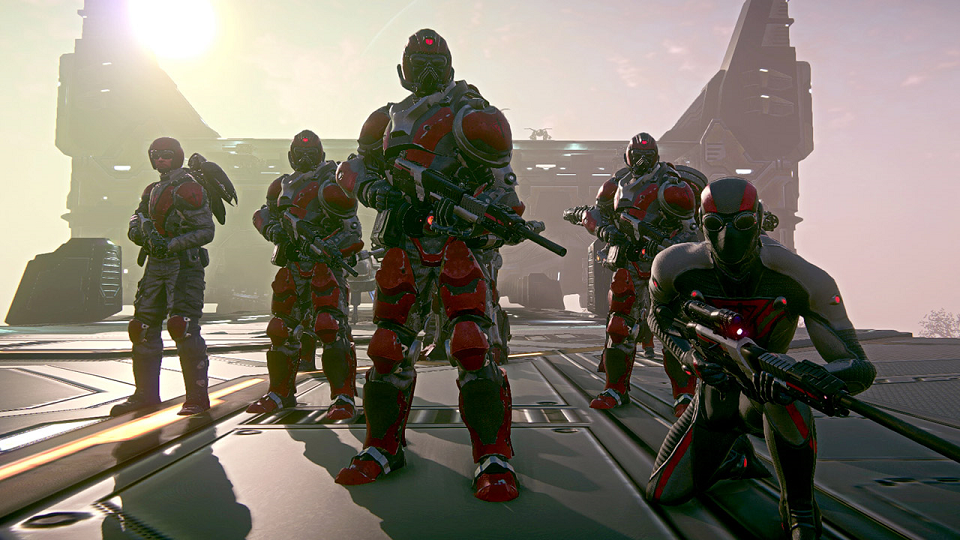
Mind you, this eye-watering scale can prove daunting at first. Our advice: get in with a squad as soon as possible to maintain a sense of direction. Playing the game solo may be off-putting -- it's dangerous to go alone and all that -- but PlanetSide 2's community is about as rational and welcoming as they come.
-
Command and Conquer
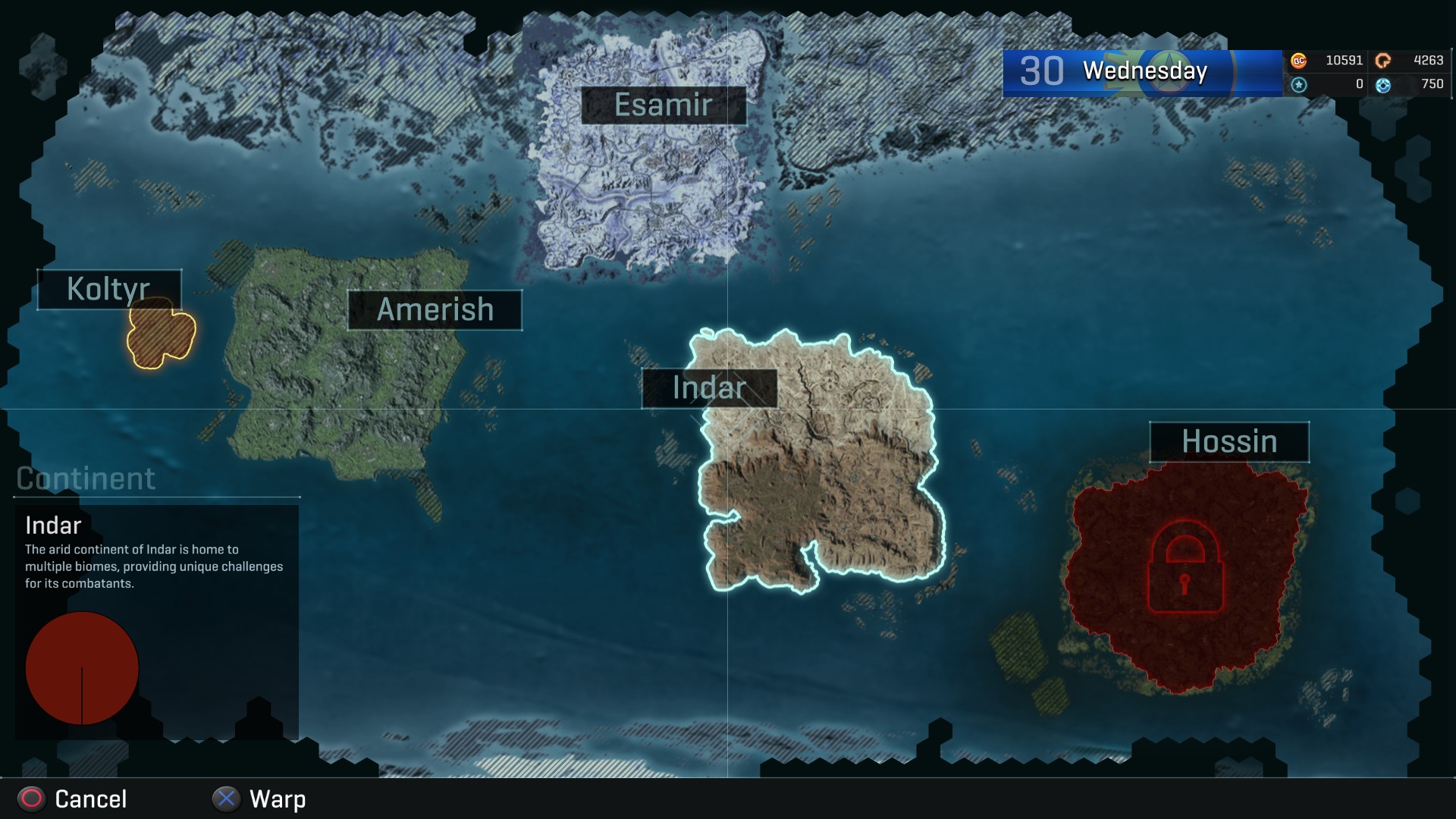
PlanetSide 2 is huge. The alien world of Auraxis boasts five unique continents, with everything from ice-covered tundras and lush forests primed for conquering.
-
Take to the Skies
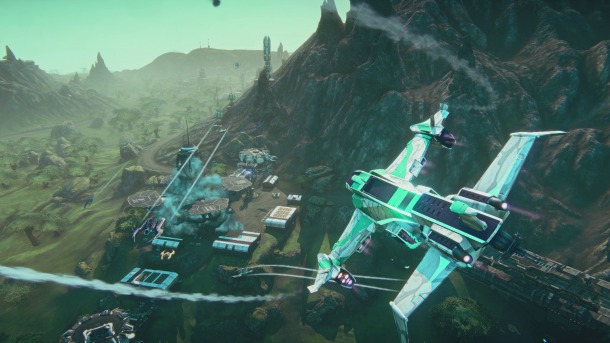
Vehicles and gunships can prove difficult to handle at first. Plus, should you dilly dally around, coasting across the pastel-colored skies without a care in the world, you'll be blown out of the air before you can say 'Vanu Sovereignty.'
-
Rich in Detail
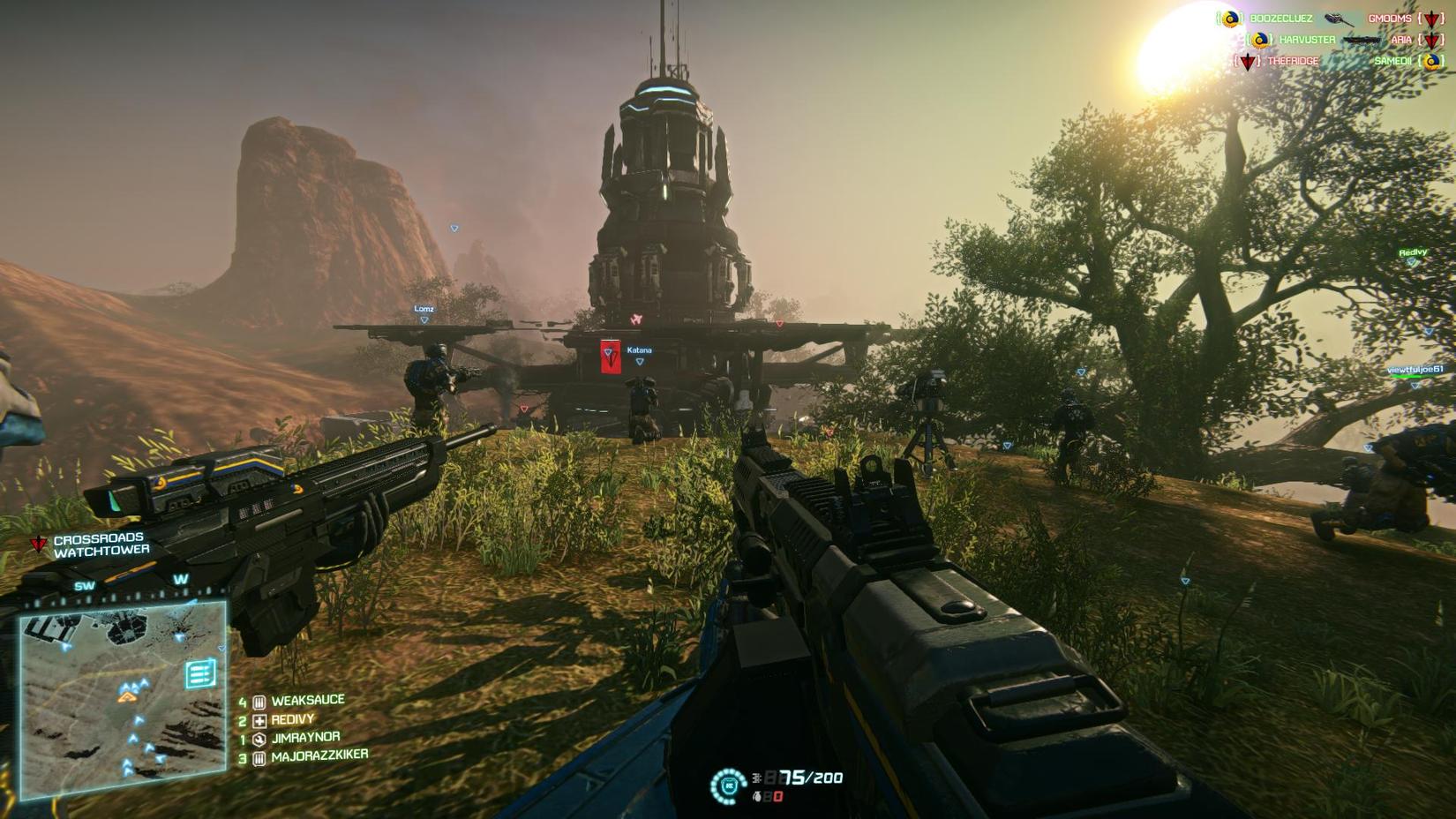
PlanetSide 2 may turn heads and raise eyebrows for its staggering scale, but Daybreak's shooter is no visual slouch, either. Environments may suffer from technical issues and texture pop-ins from time to time, but the detail on display is remarkable for an MMO of this nature.
-
Big and Beautiful
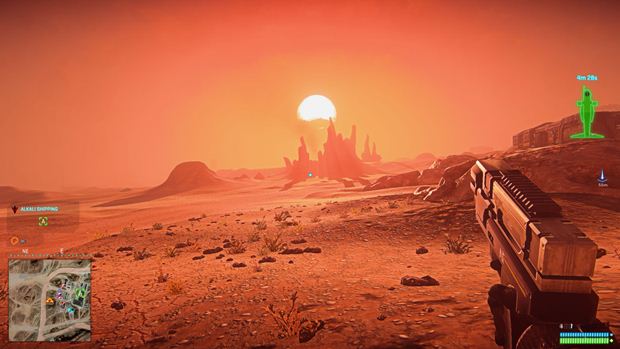
We've talked at length about PS2's gargantuan scale, but there's also tremendous beauty in its alien world. Just don't gawp at that stunning sunset for too long.
-
End(less) War
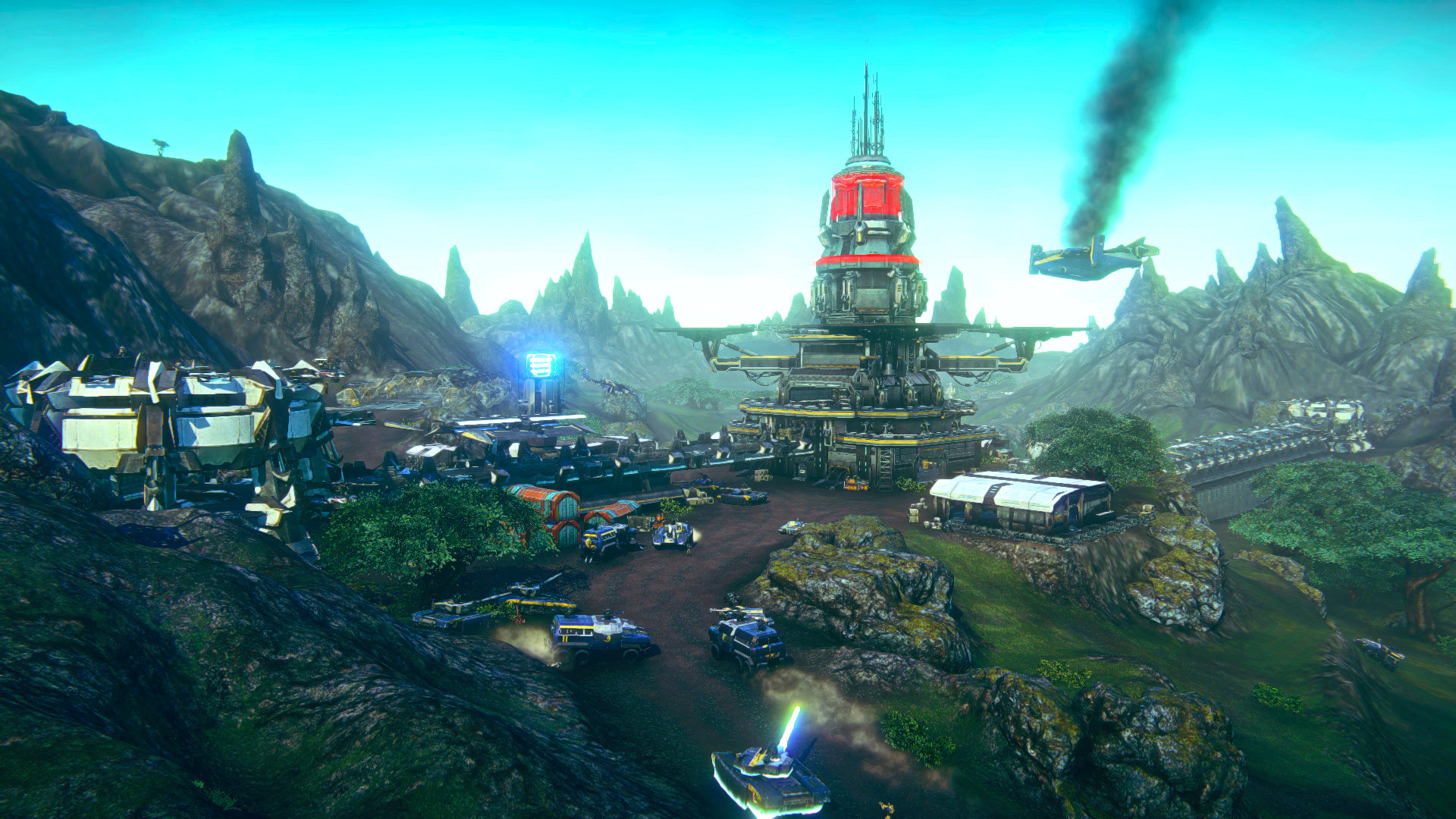
Bearing semblance to other genre titles such as Warhawk, Section 8 and, to a lesser extent, Ubisoft's EndWar, PlanetSide 2 really sets itself apart through its persistent combat. Forget compartmentalized rounds and matches, The Great Auraxian War is literally relentless.
-
Varied Classes
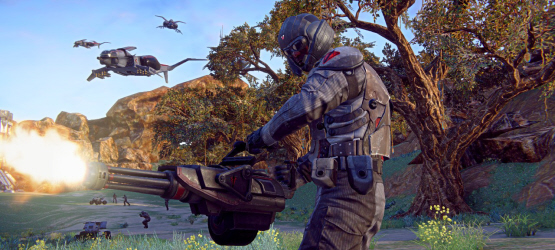
From the stealth-based Infiltrator to the hulking MAX, there's an array of different classes within PlanetSide 2 to experiment with. What's crucial is how each of these archetypes filter into the warfare, with each contributing to the bigger picture in their own unique ways.
